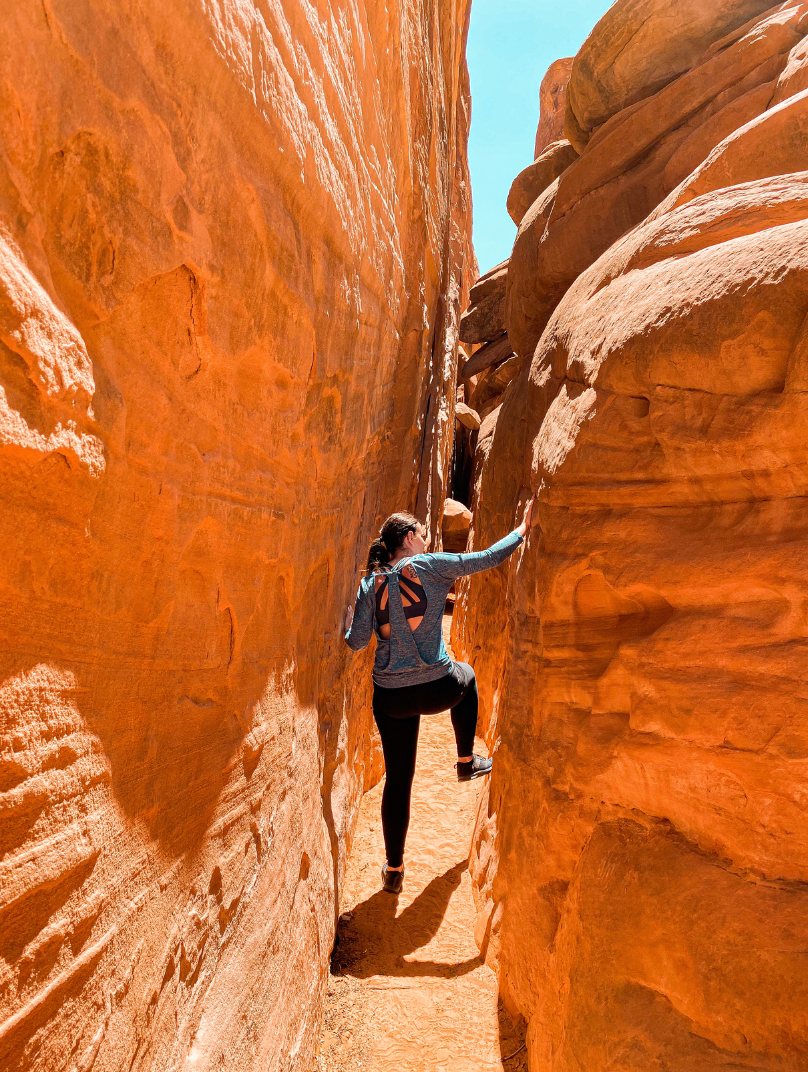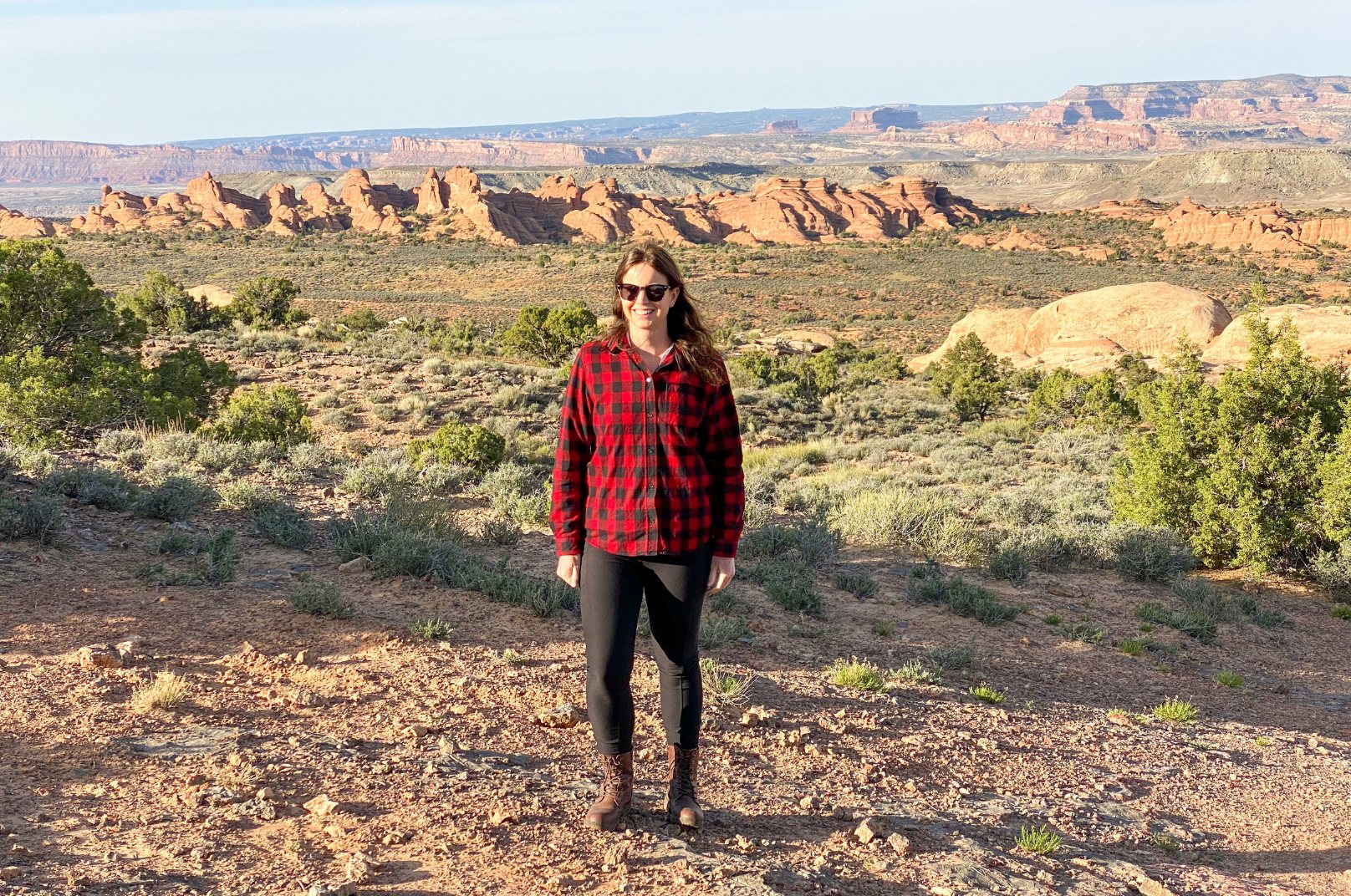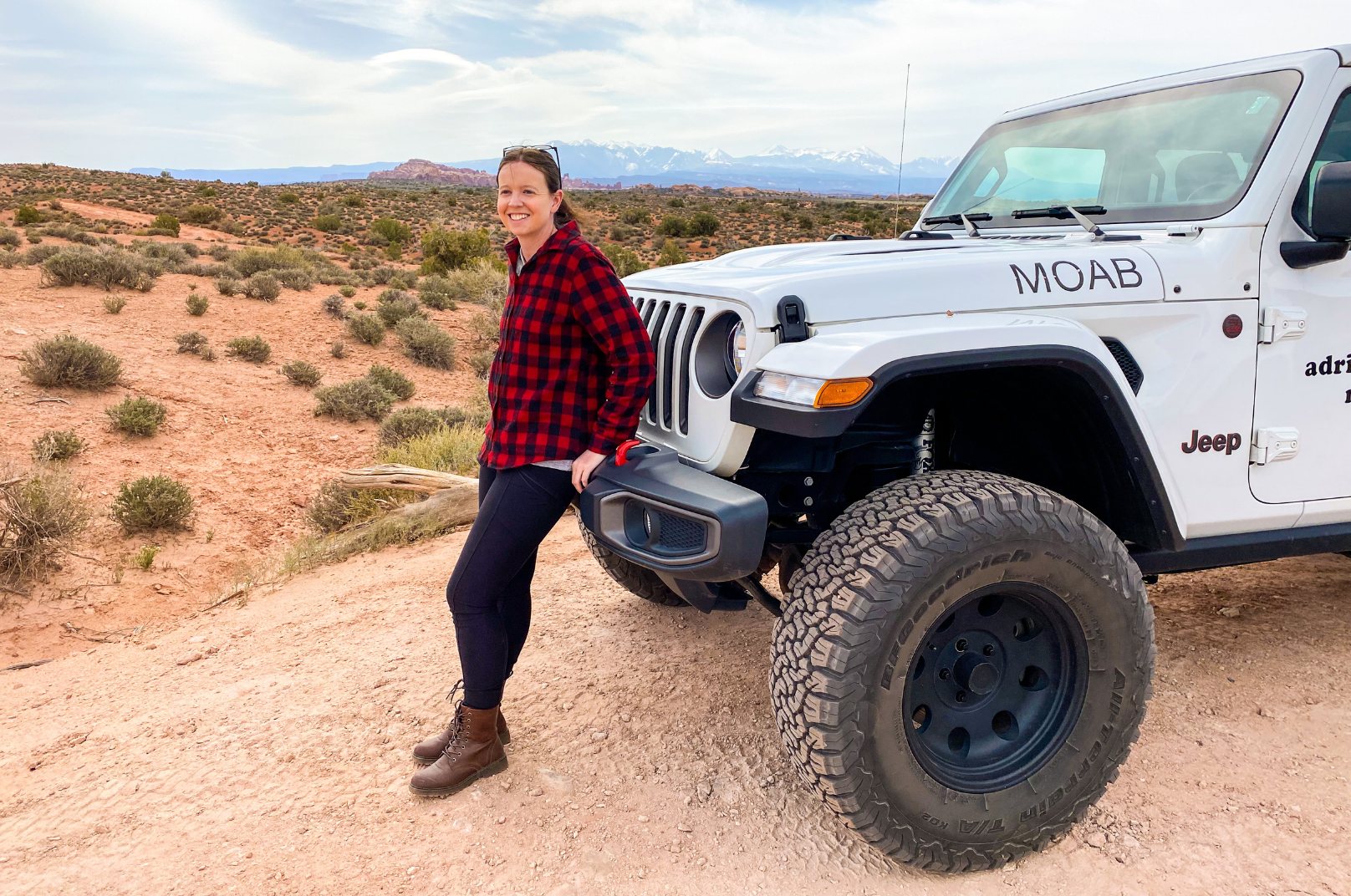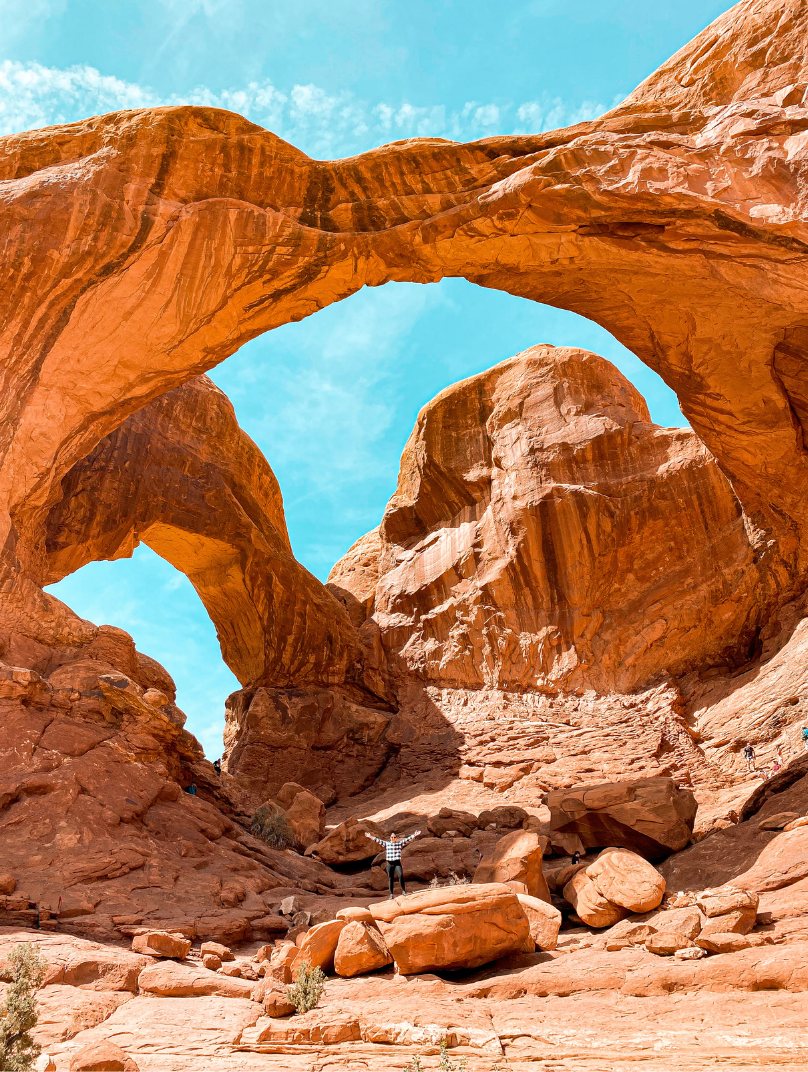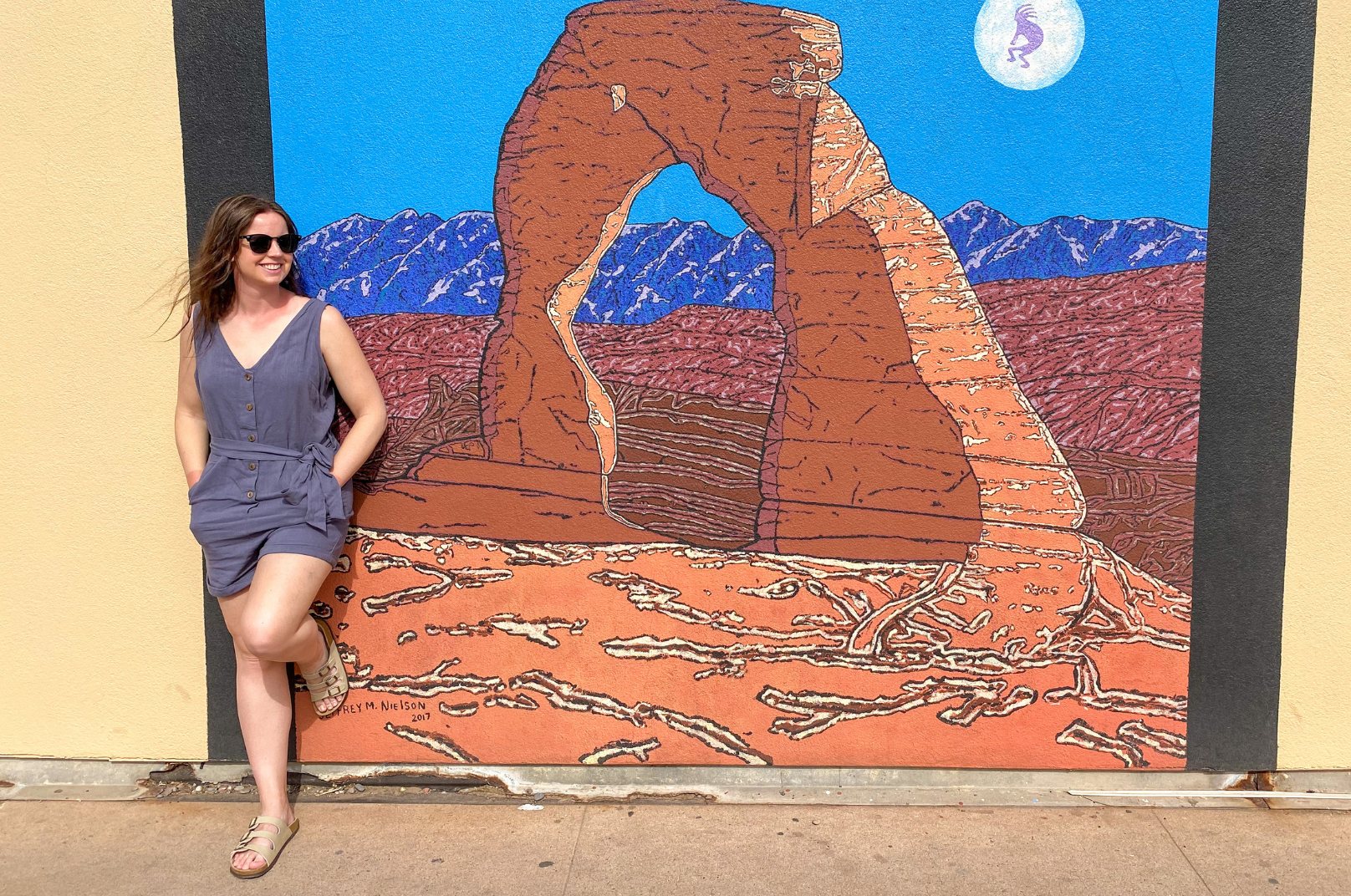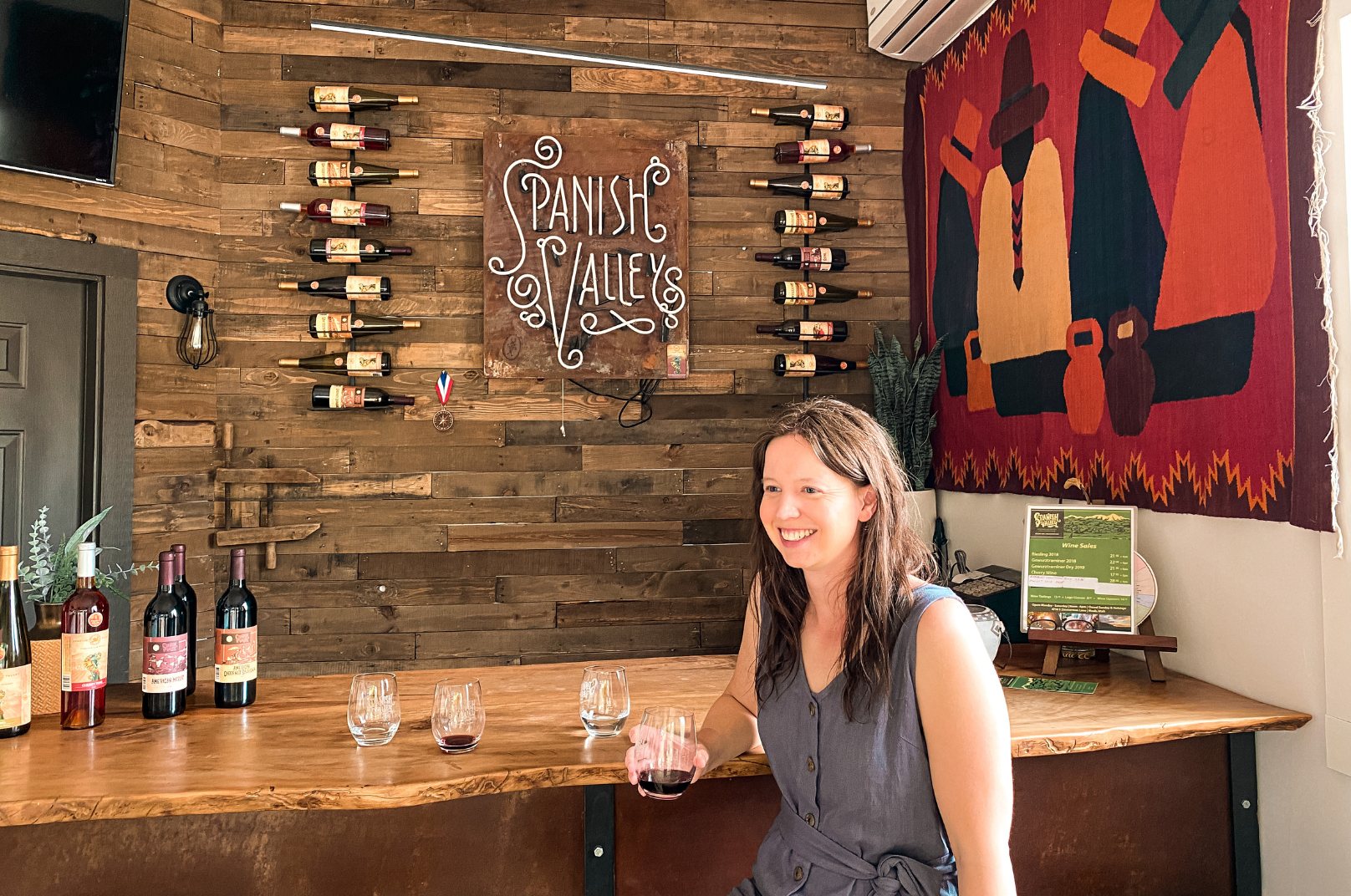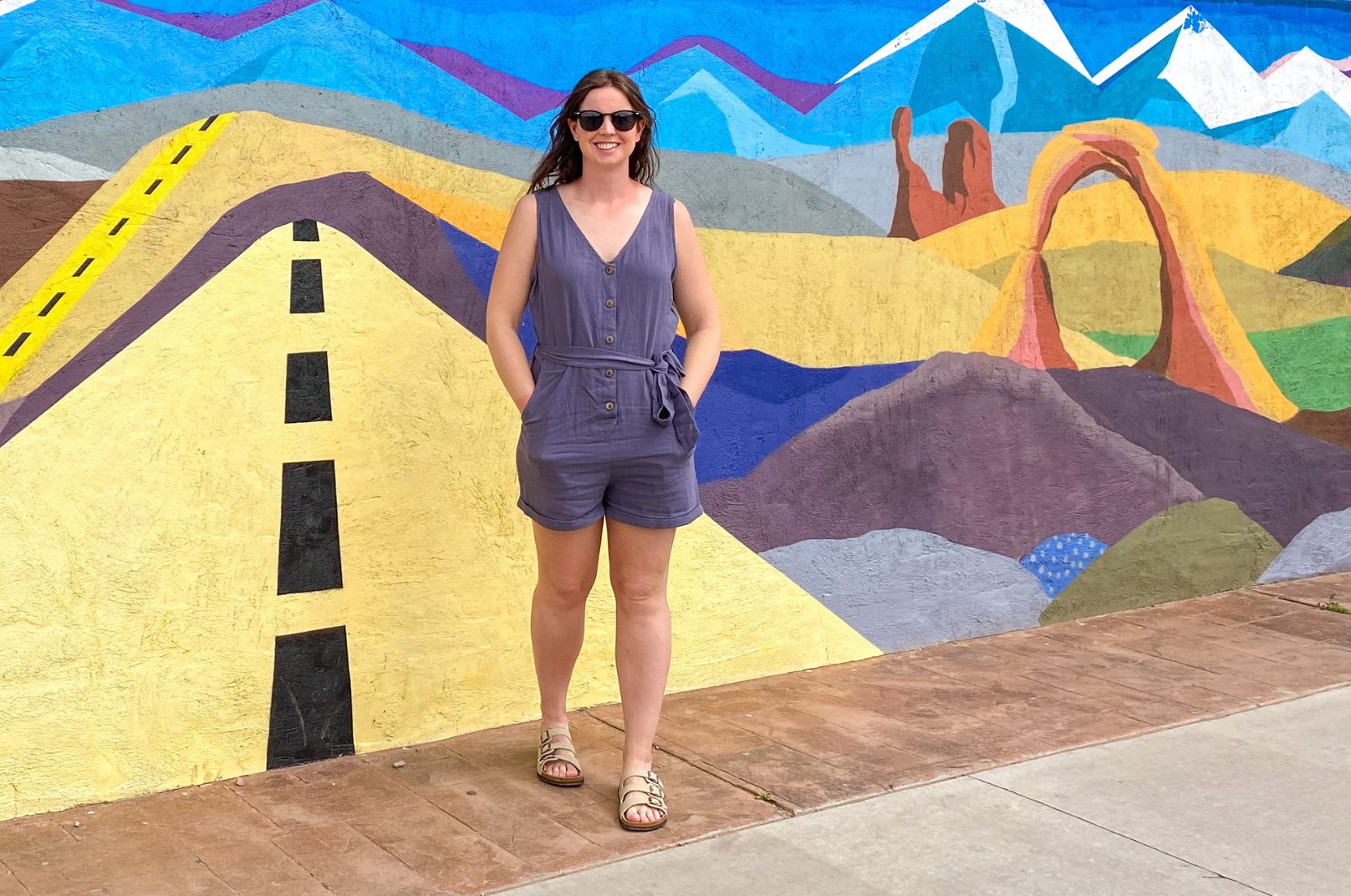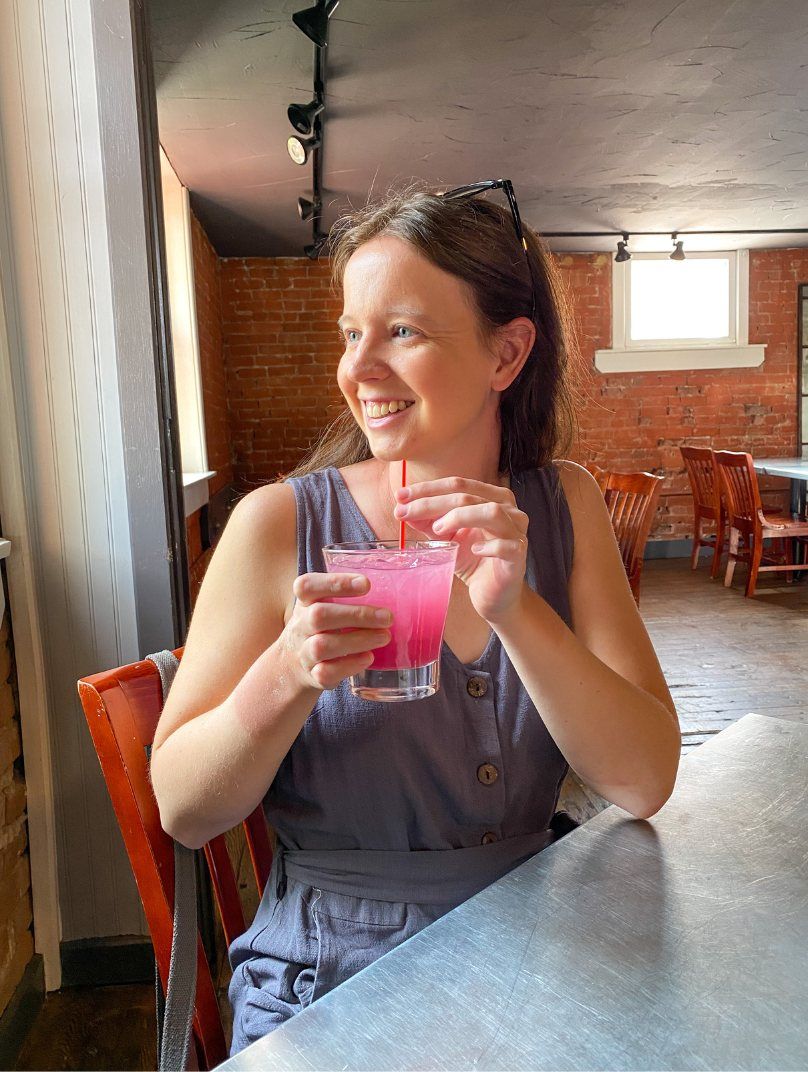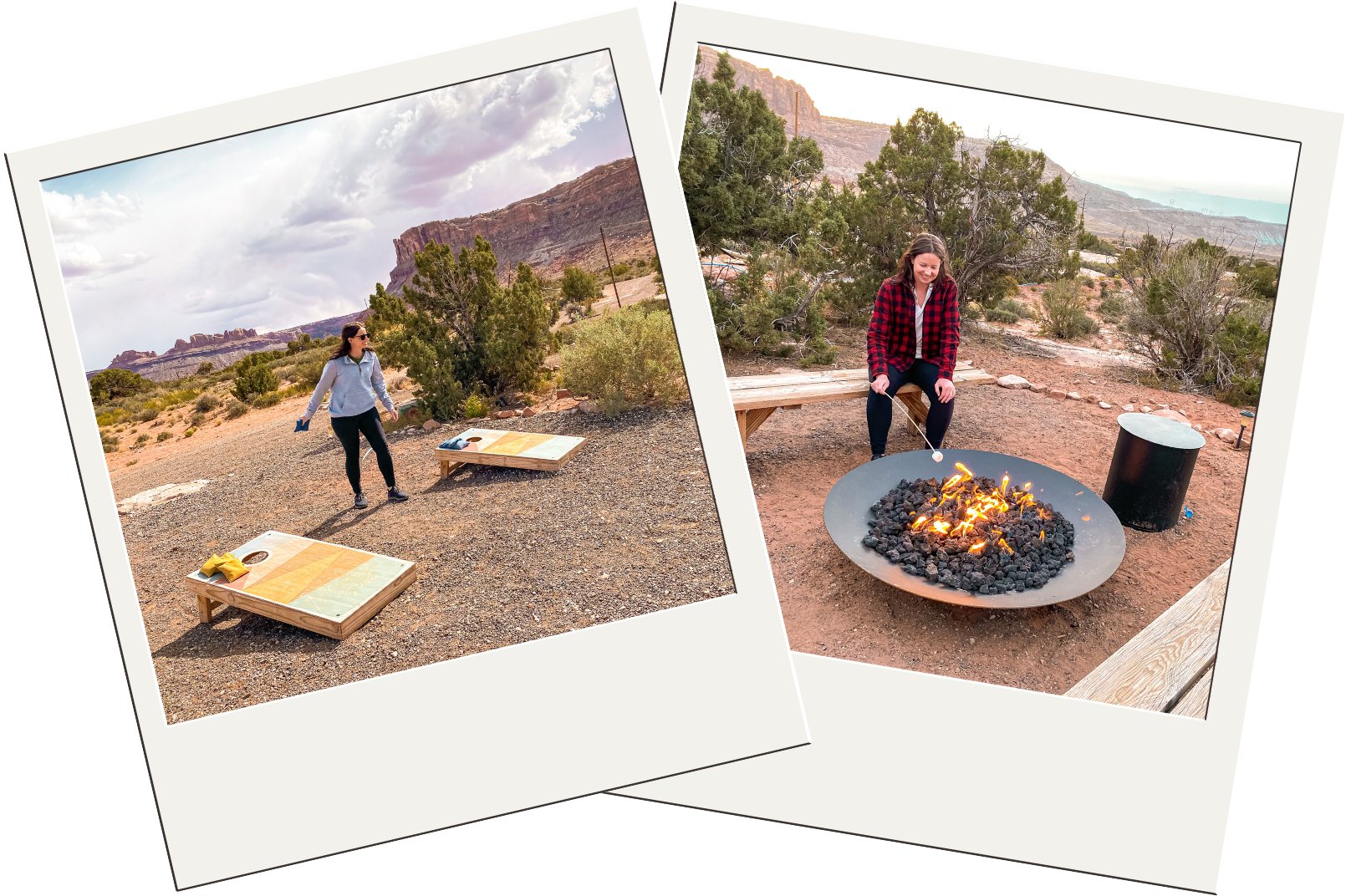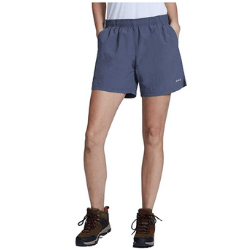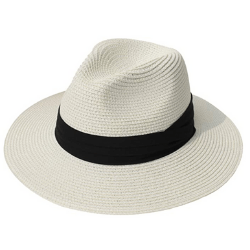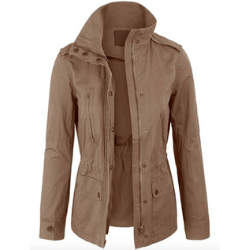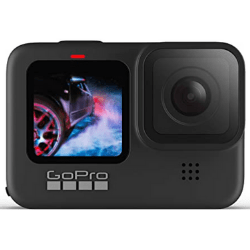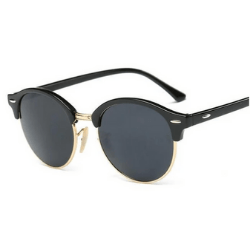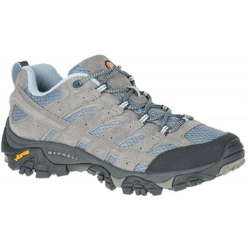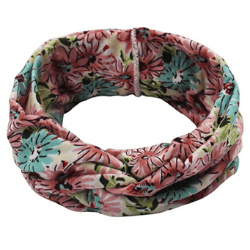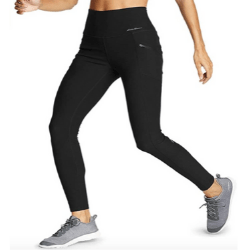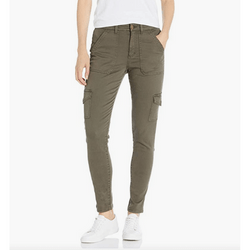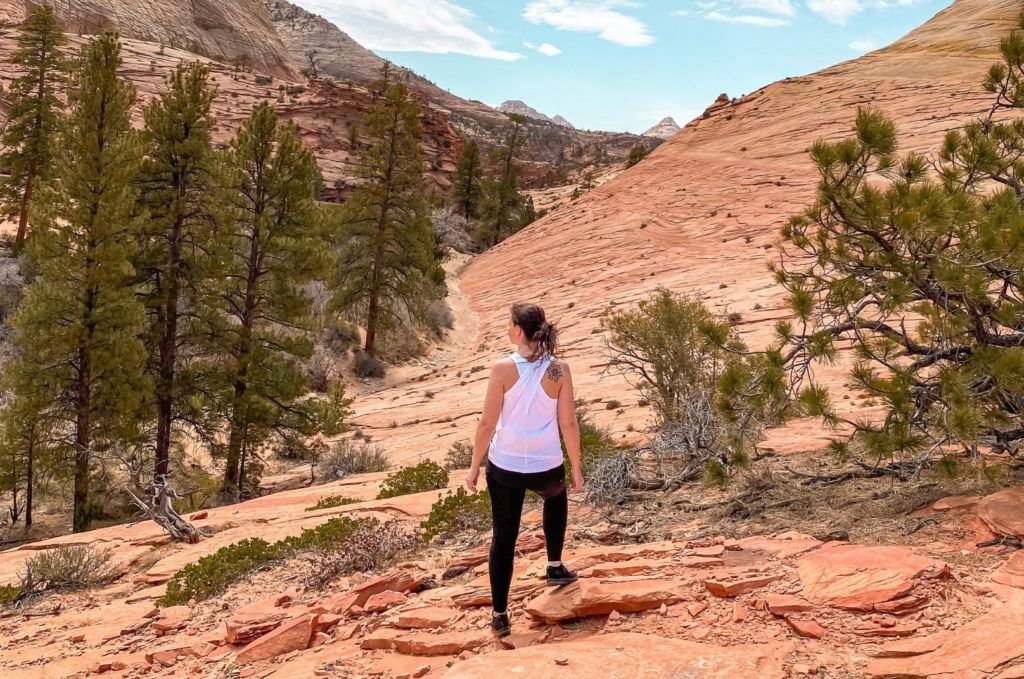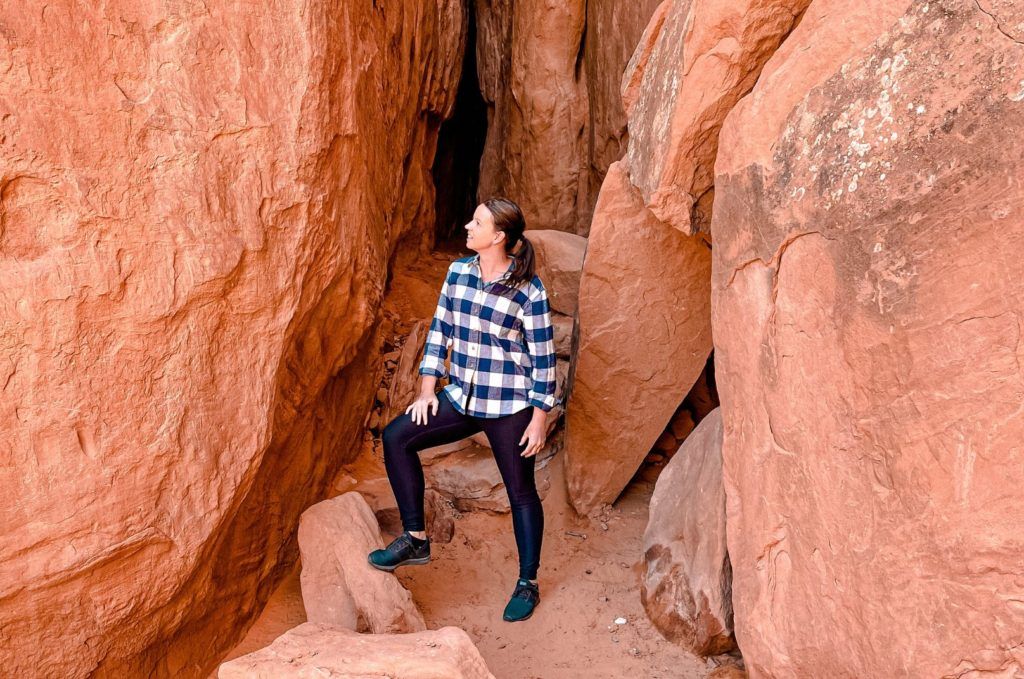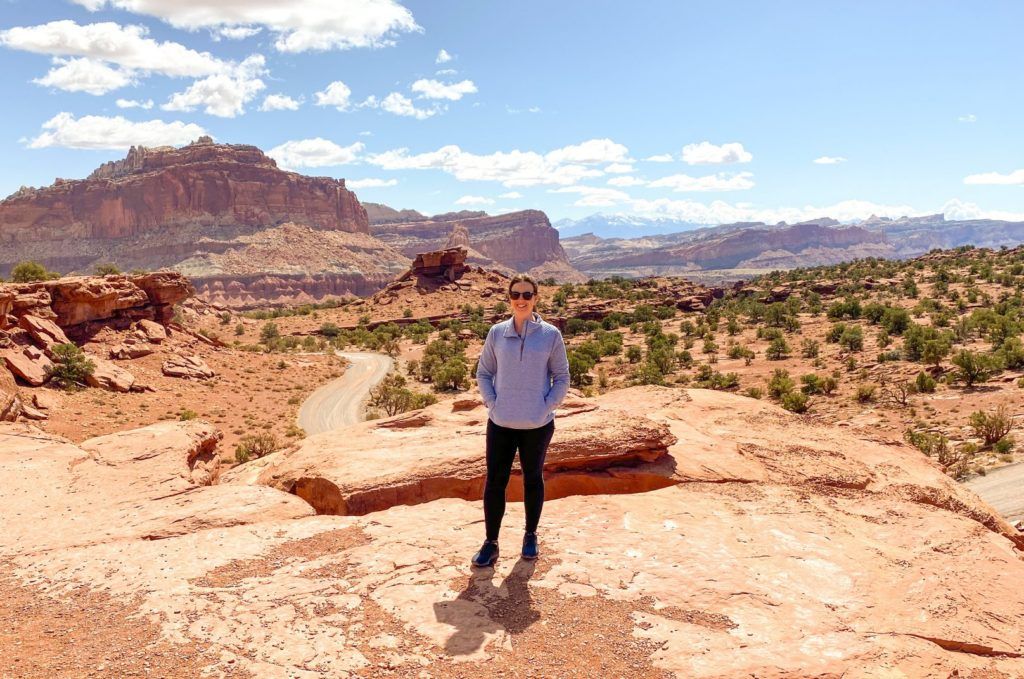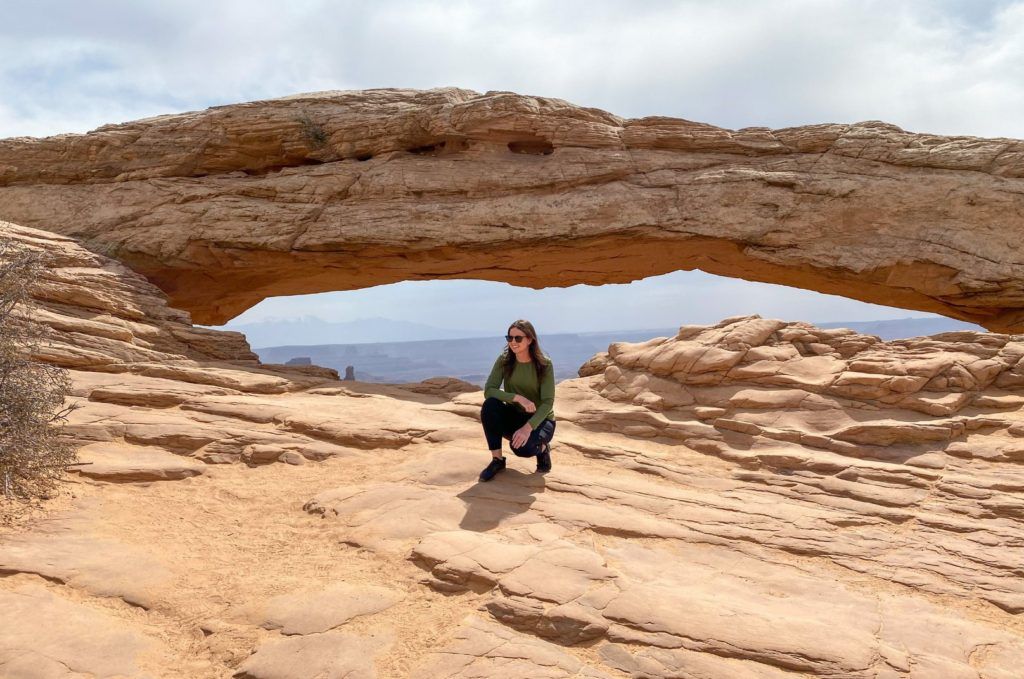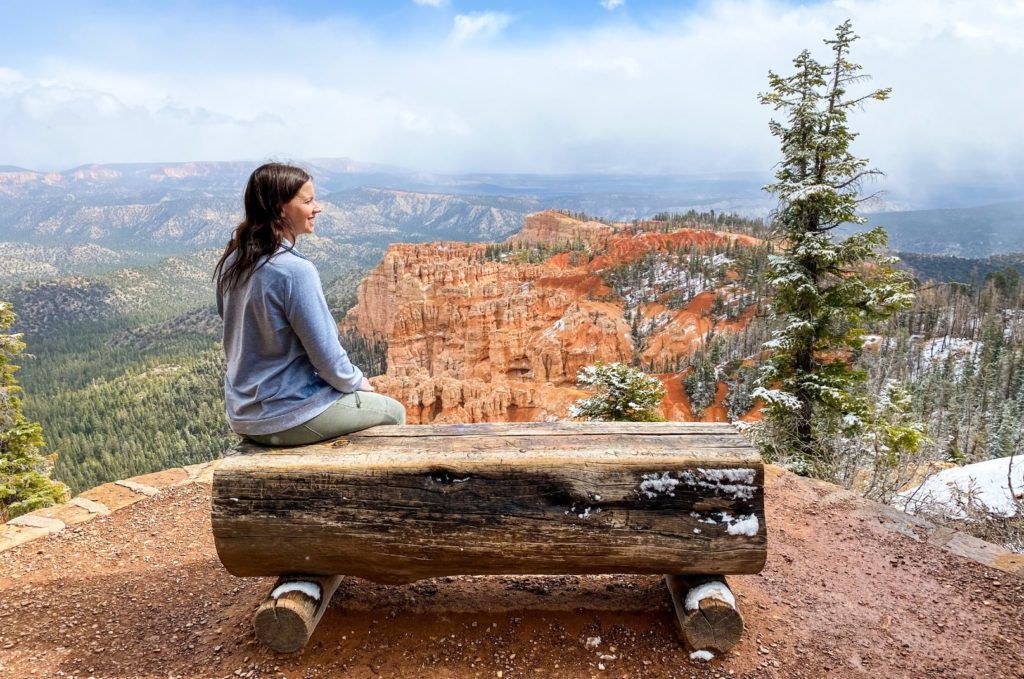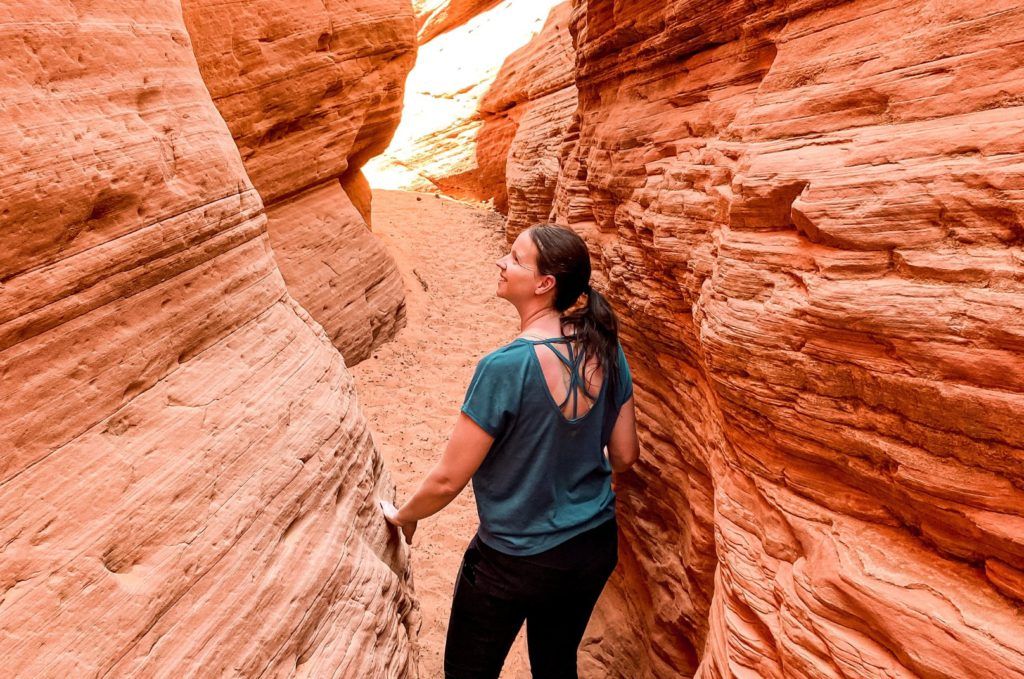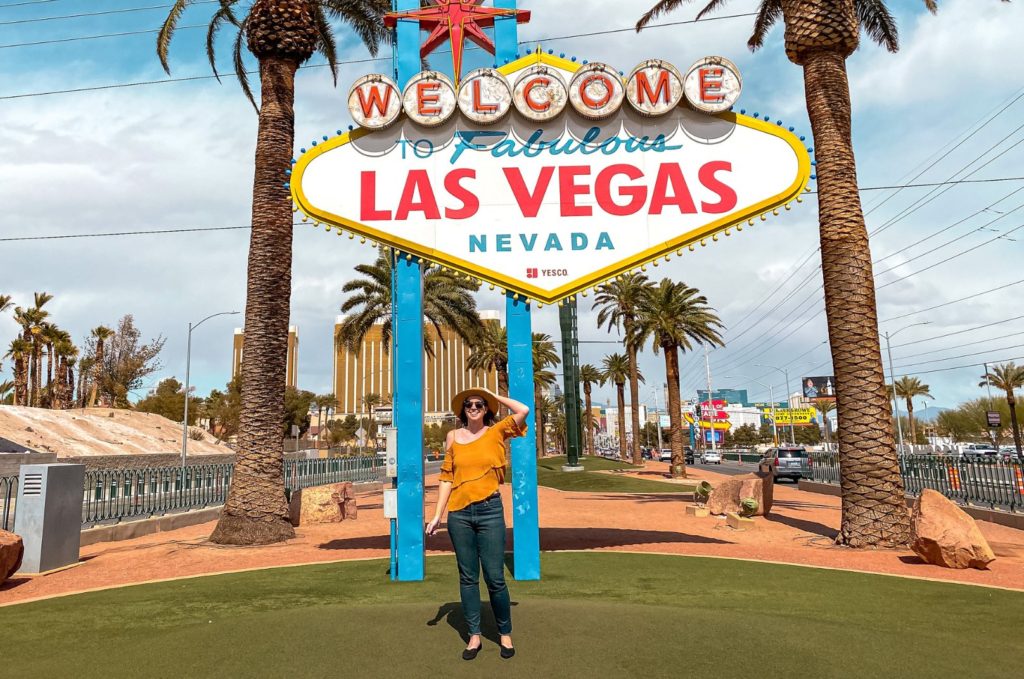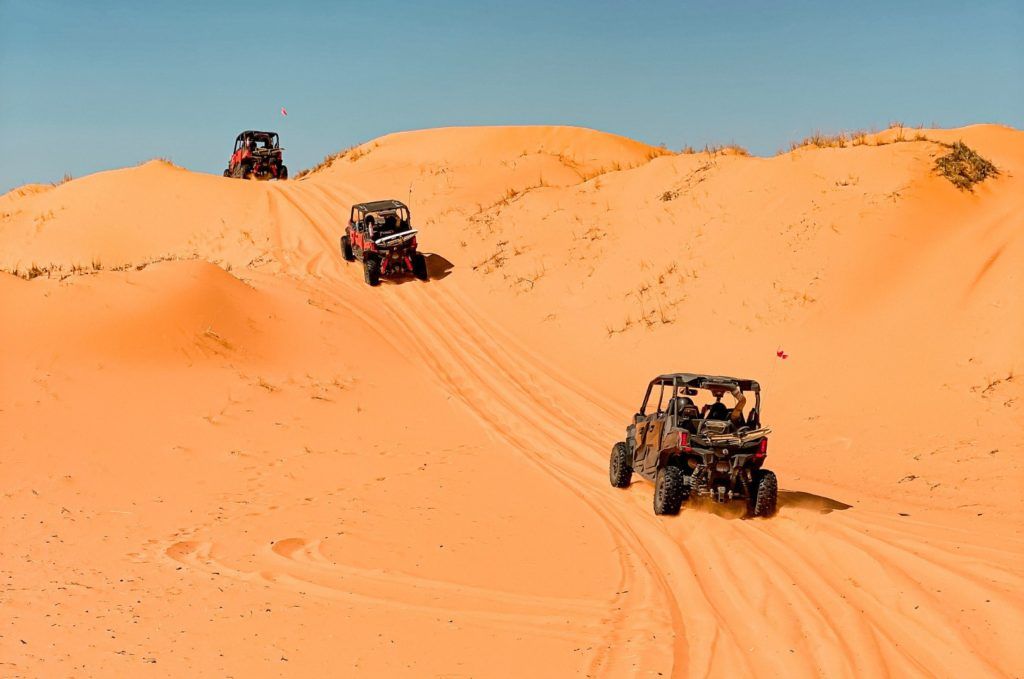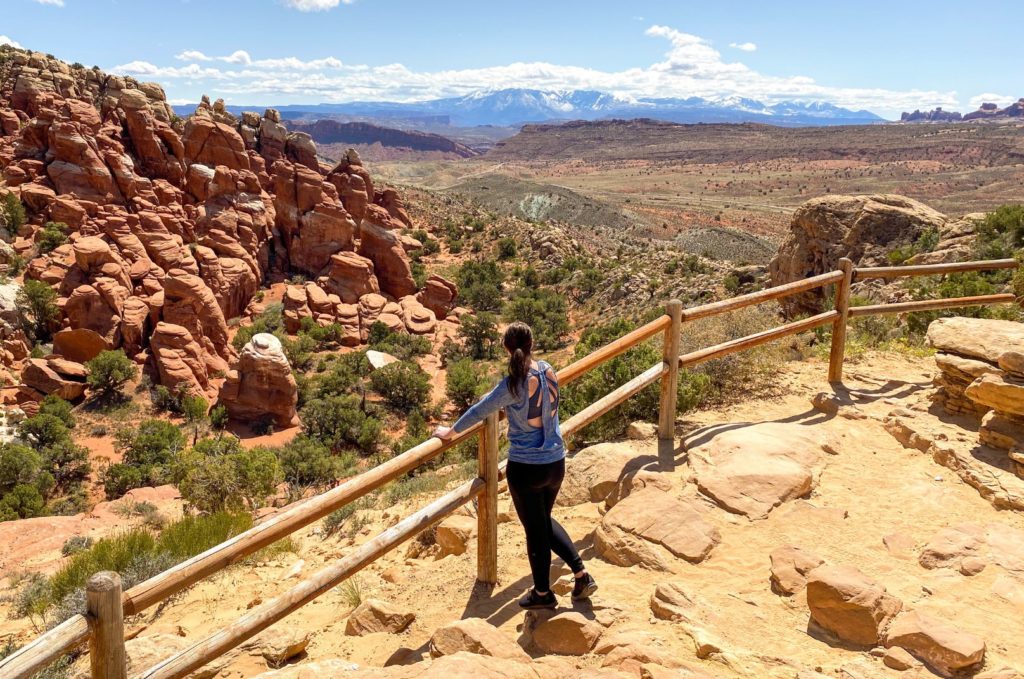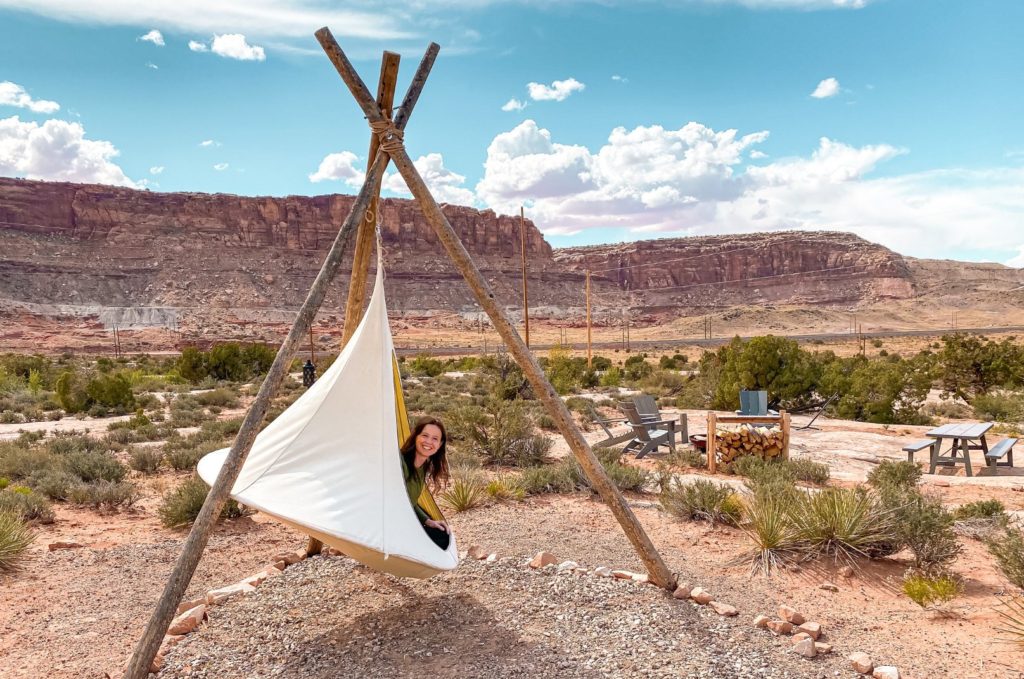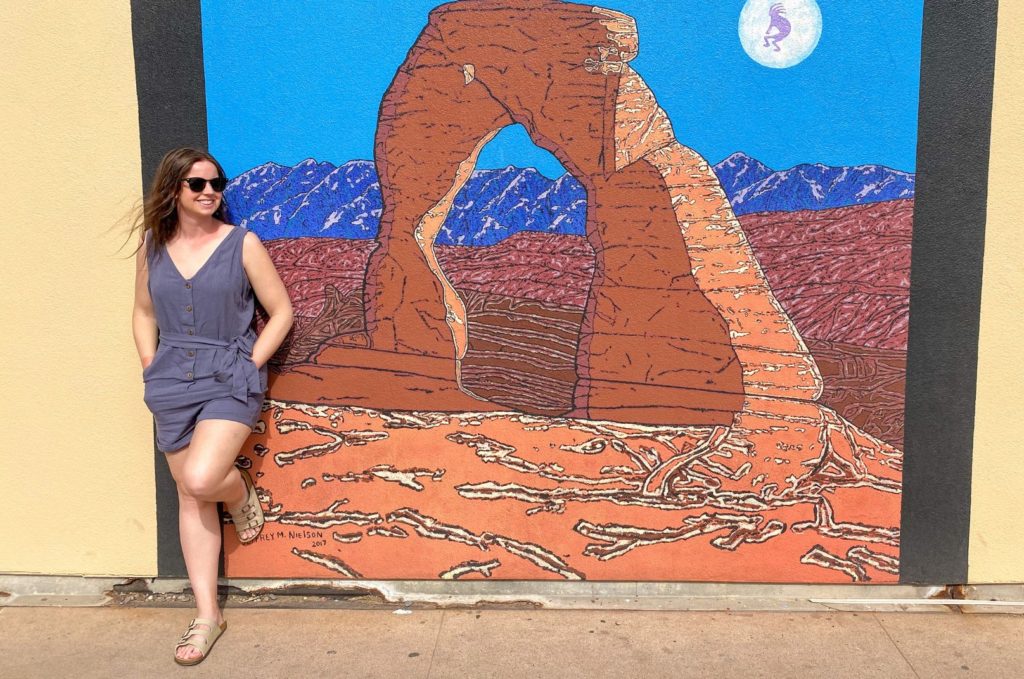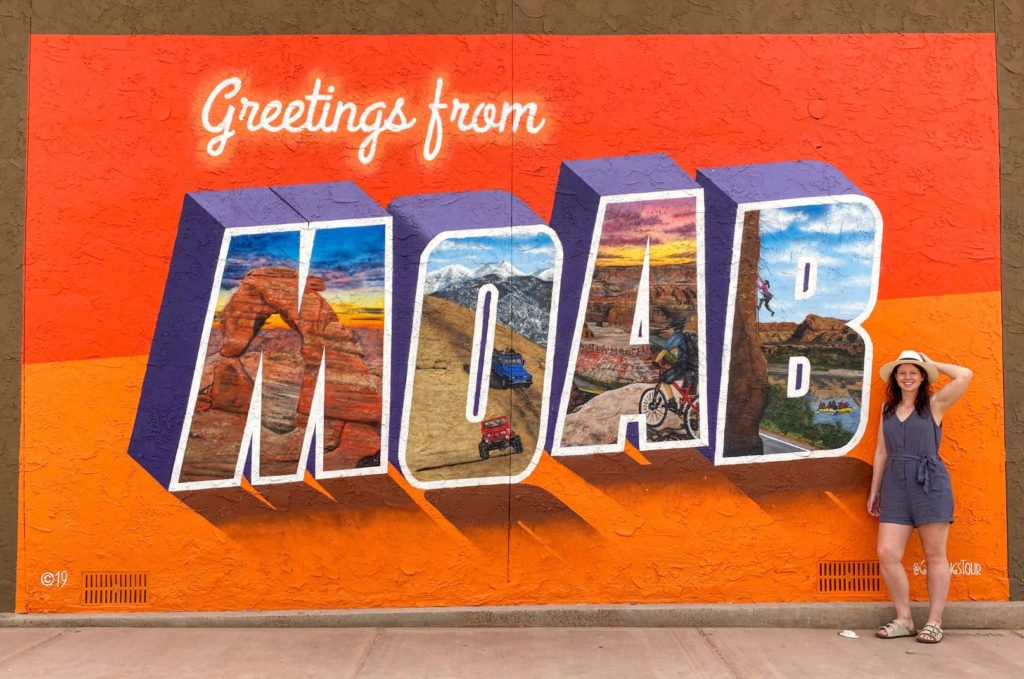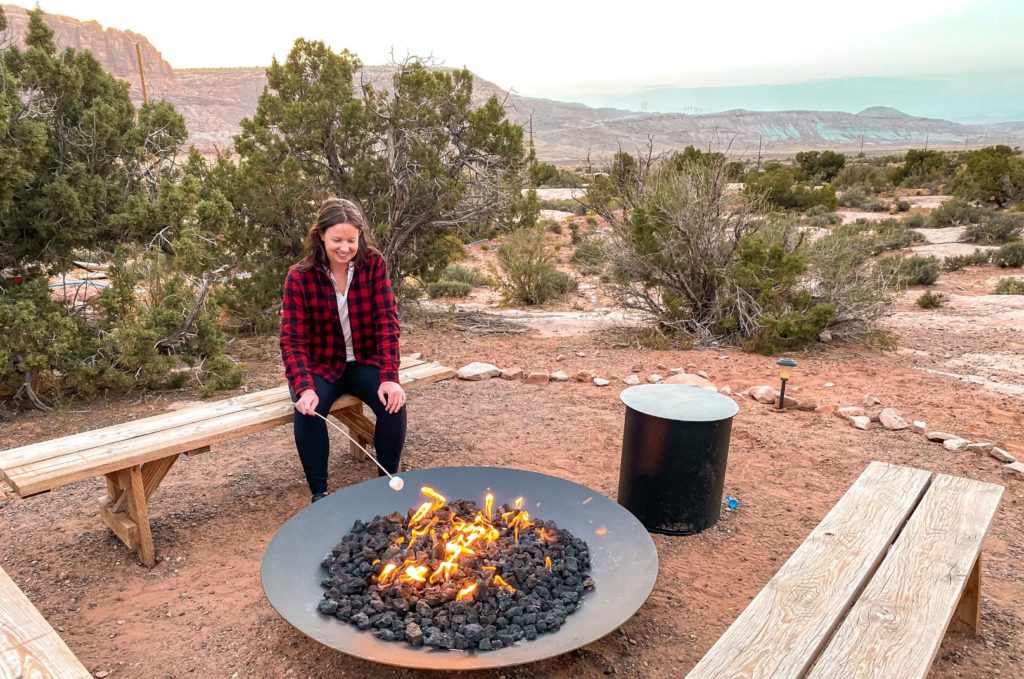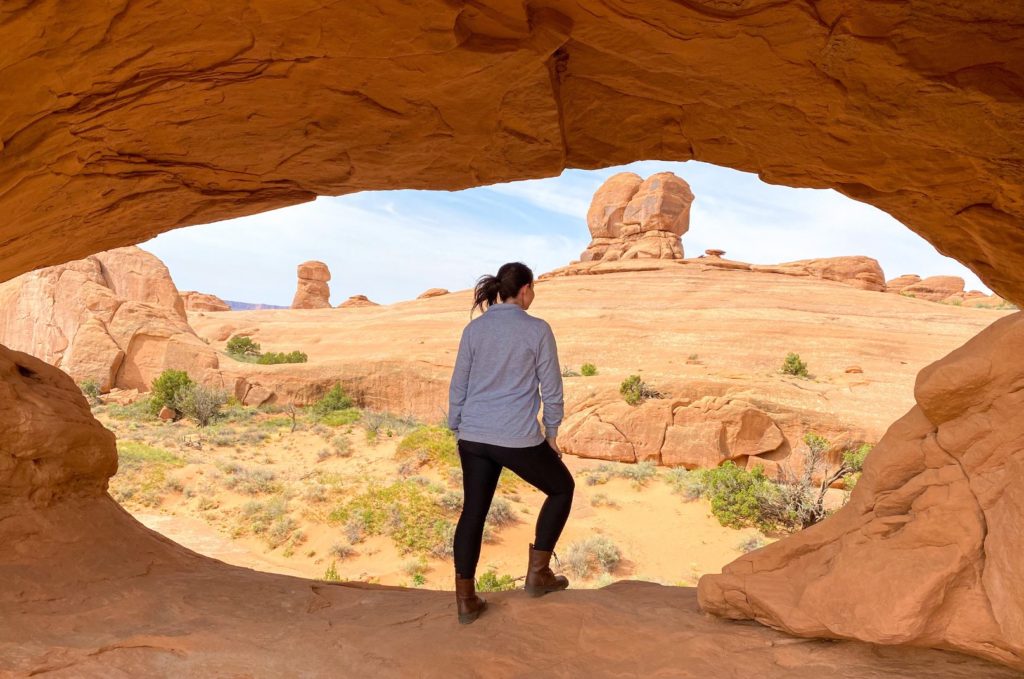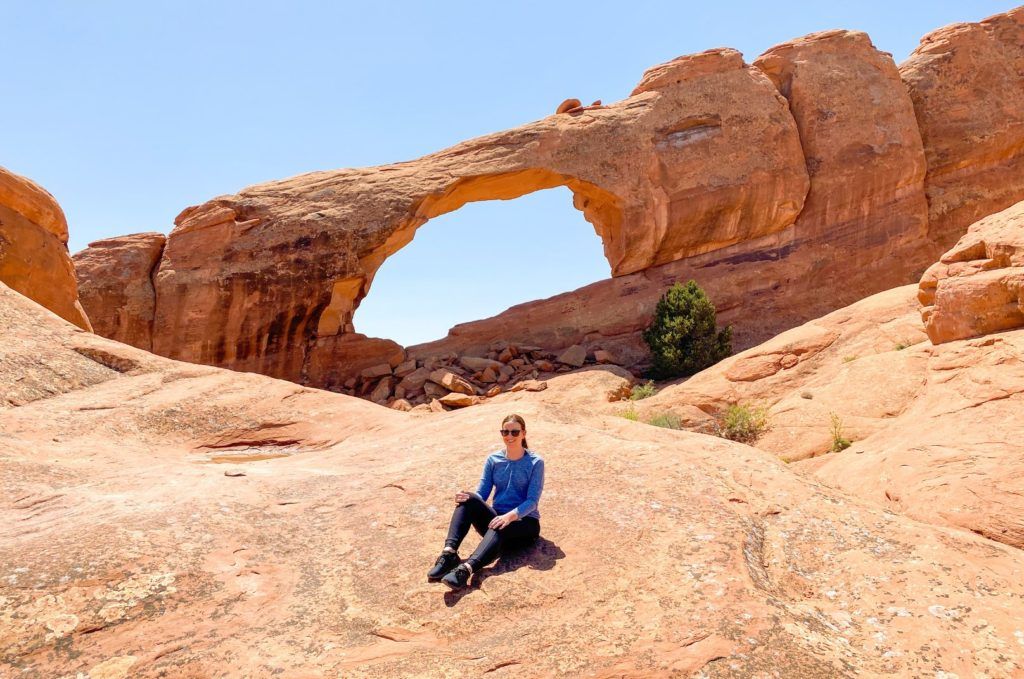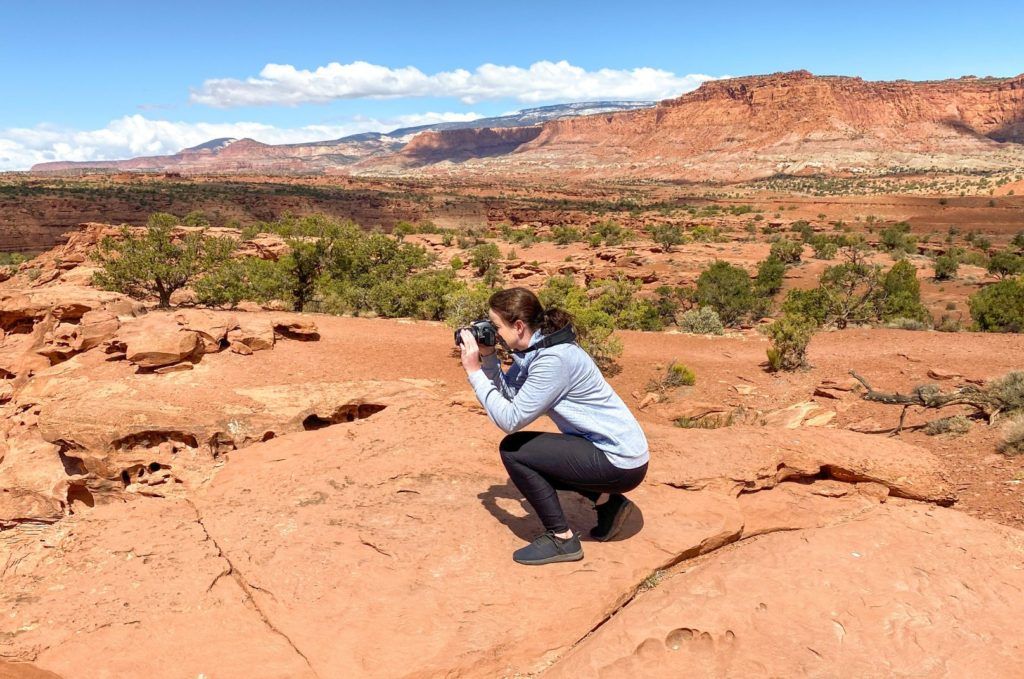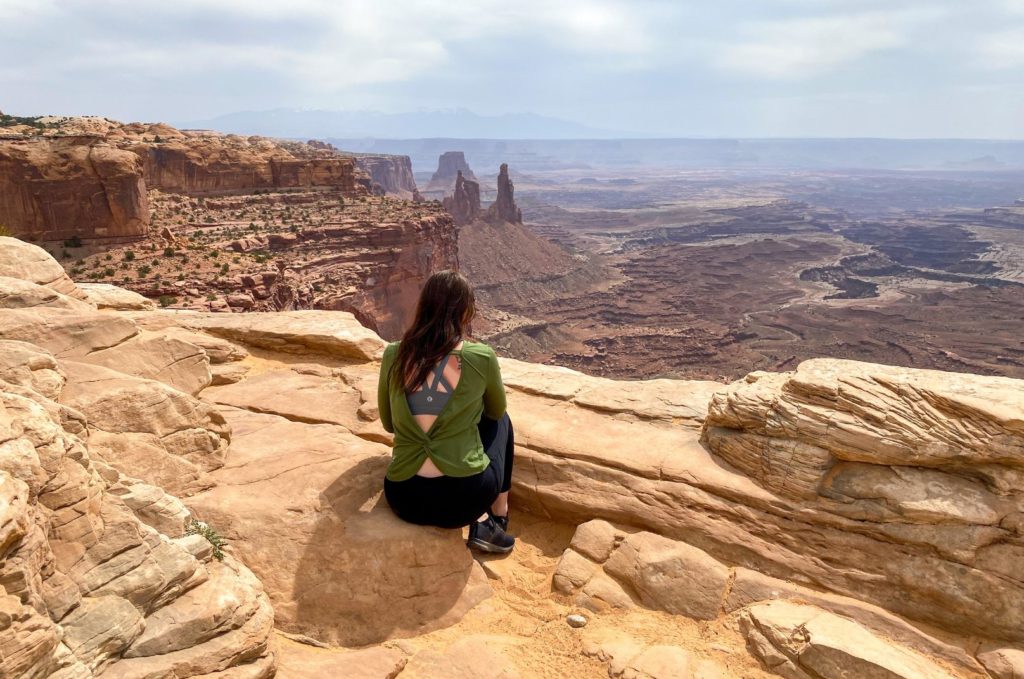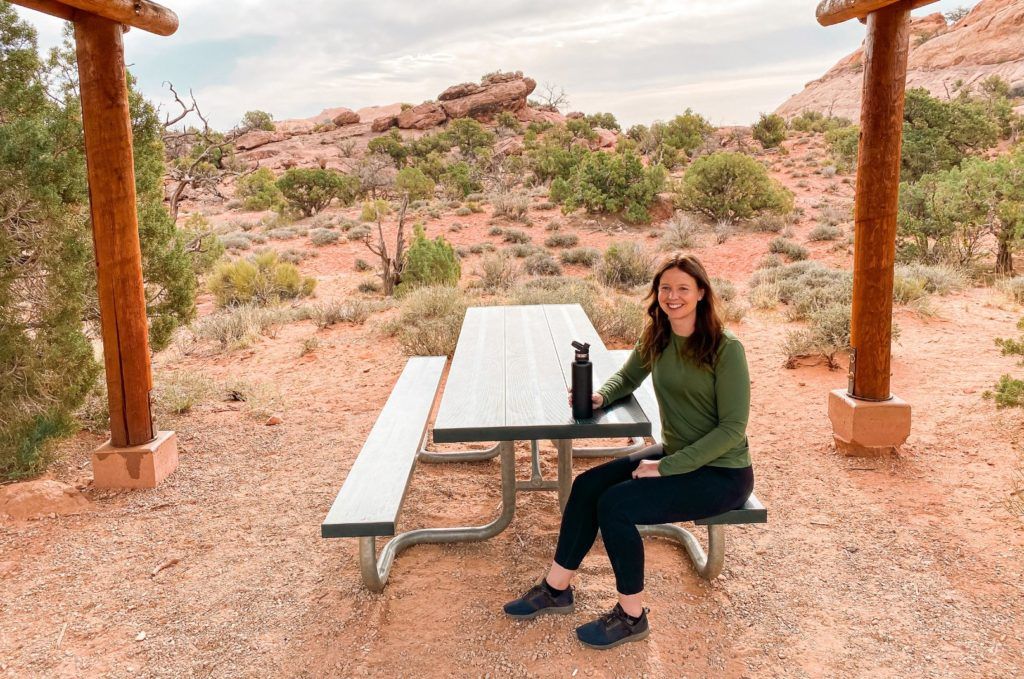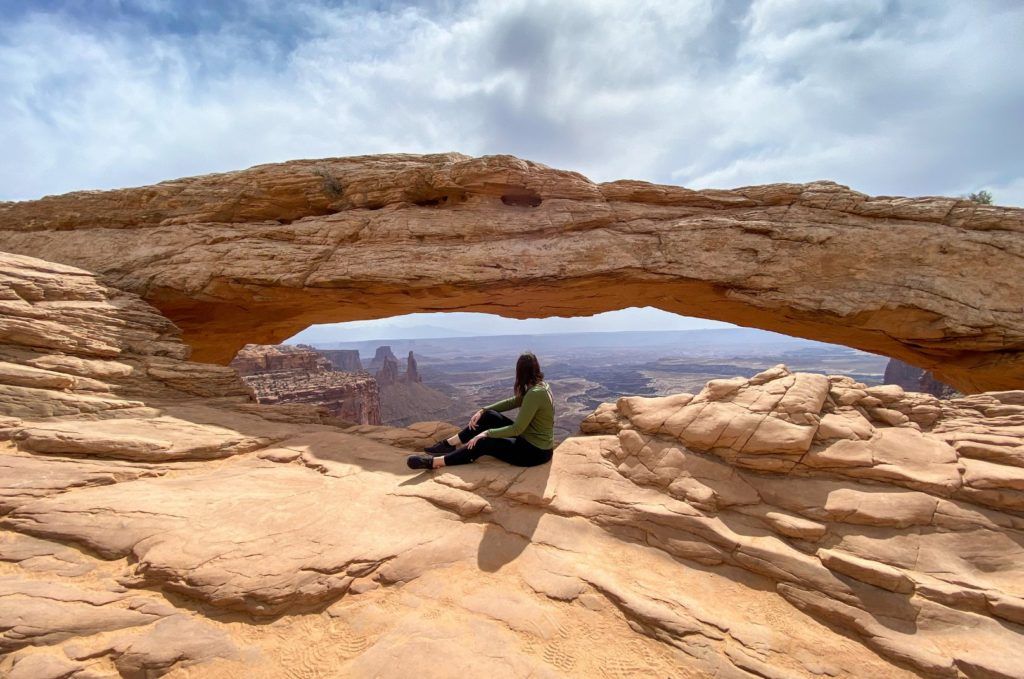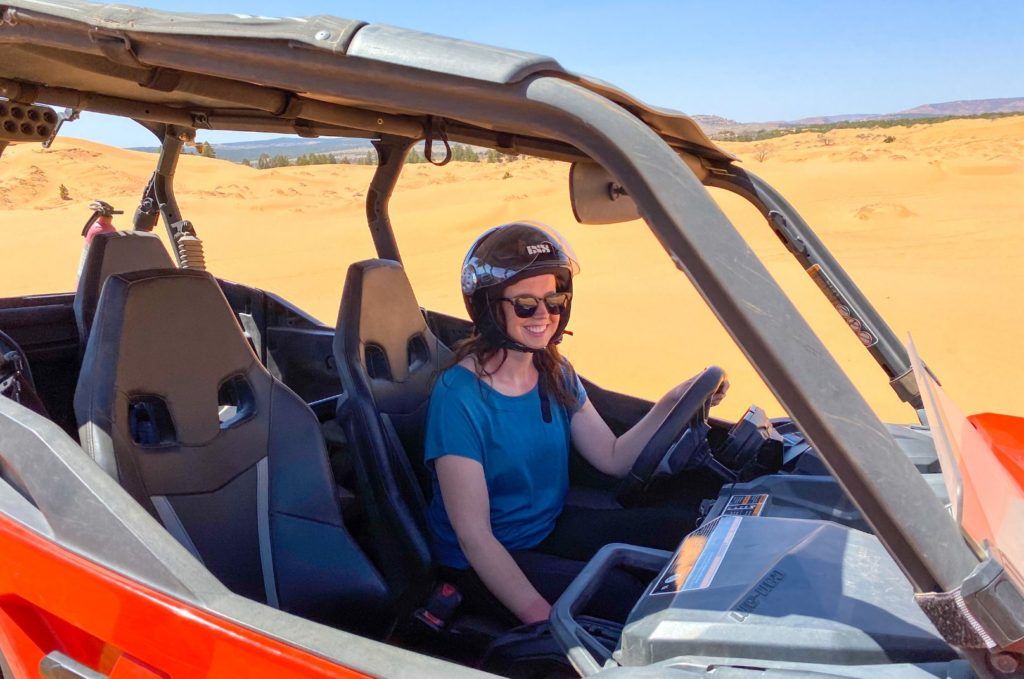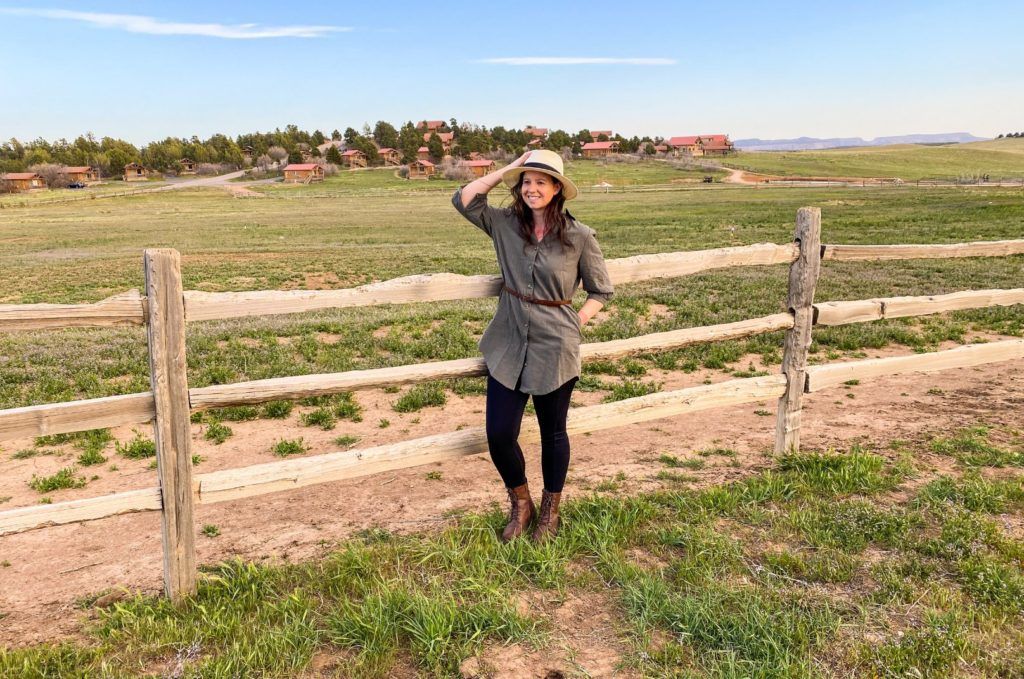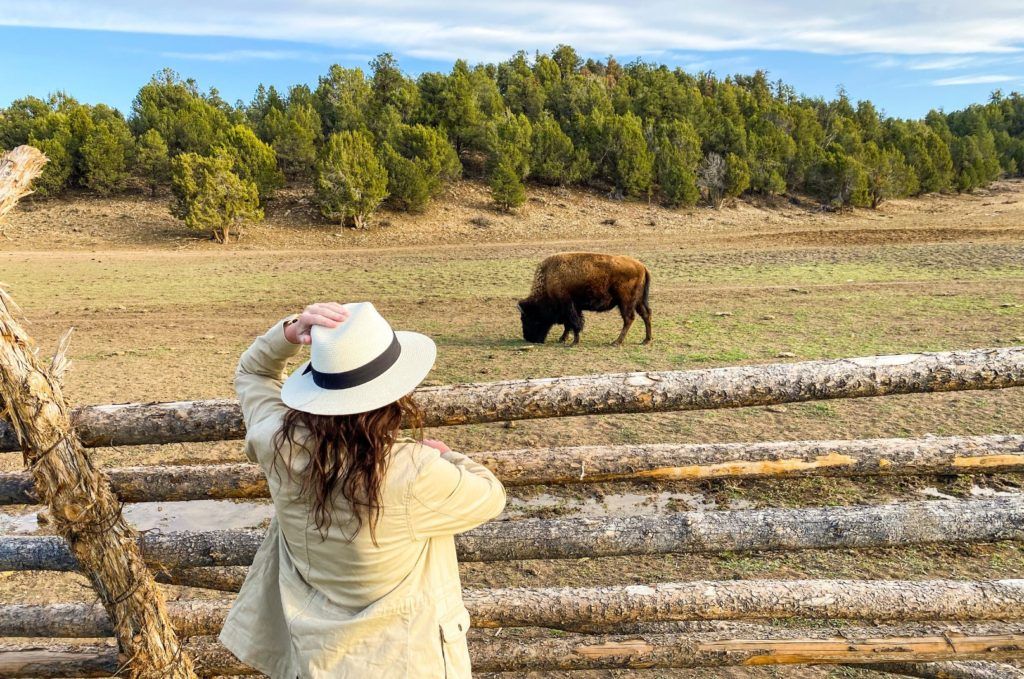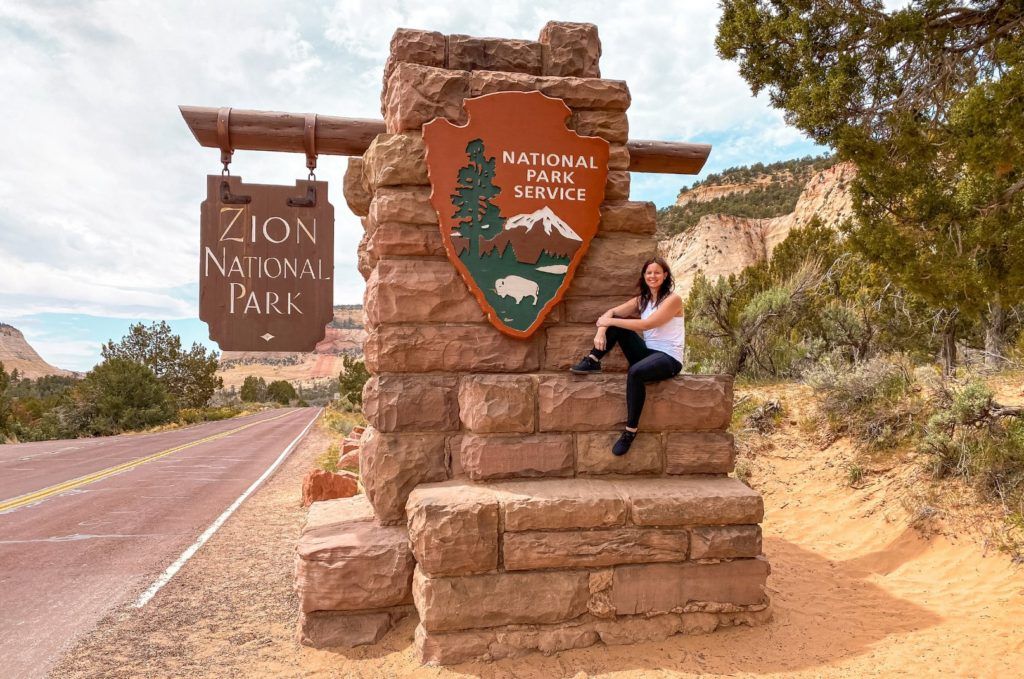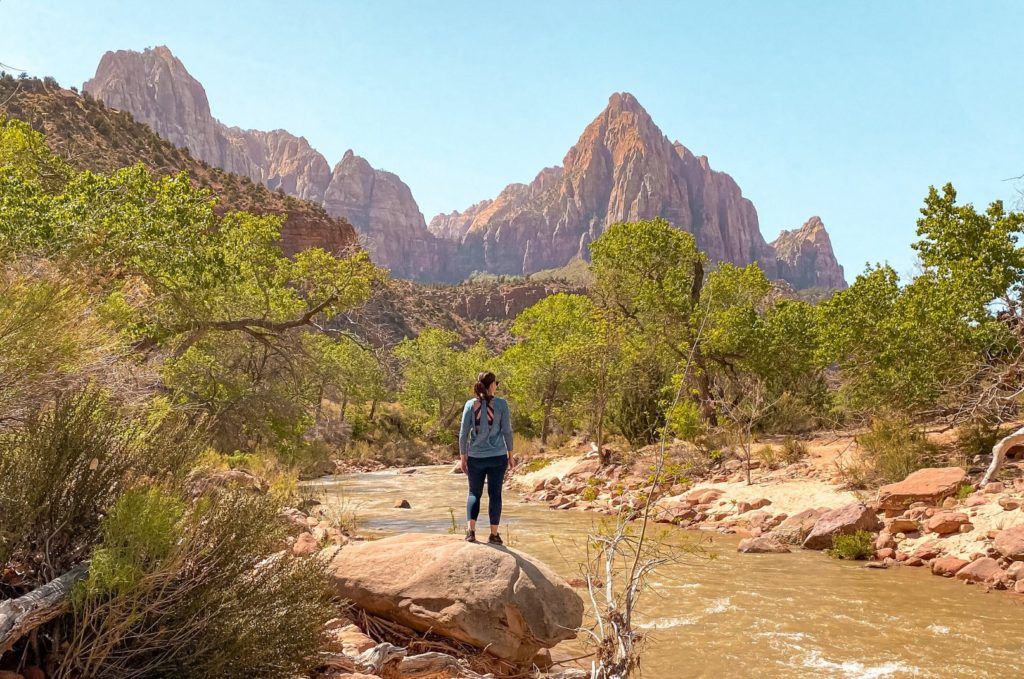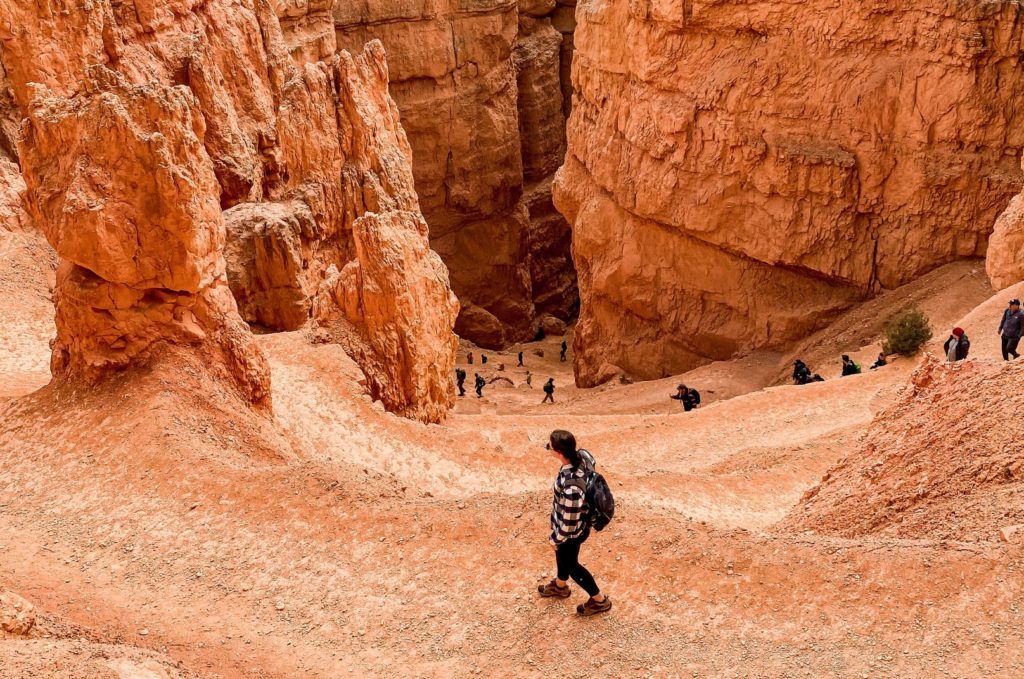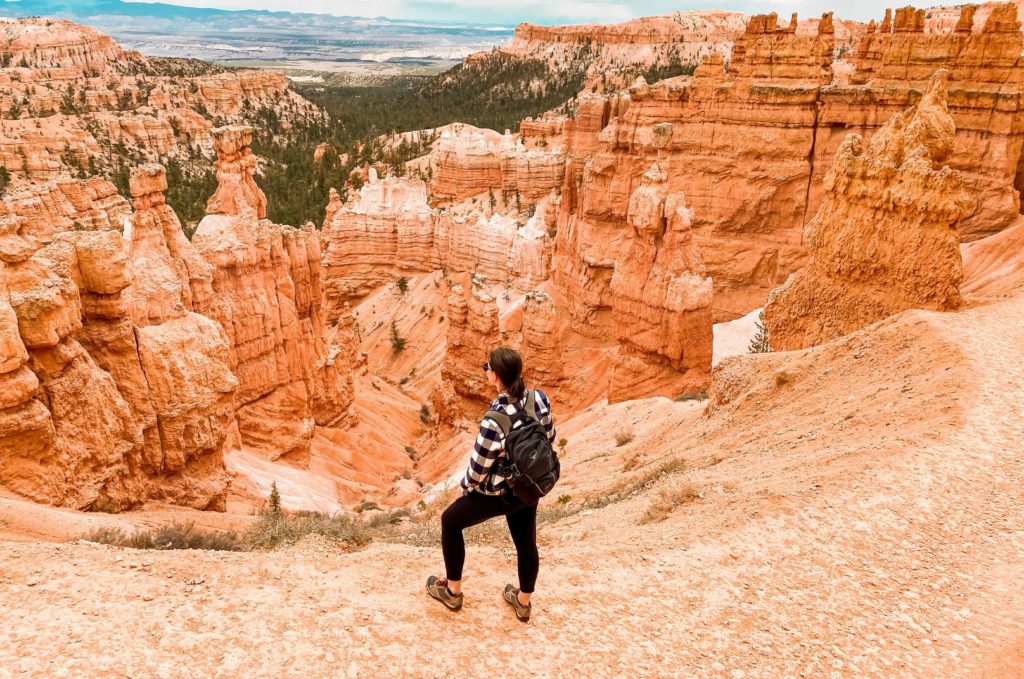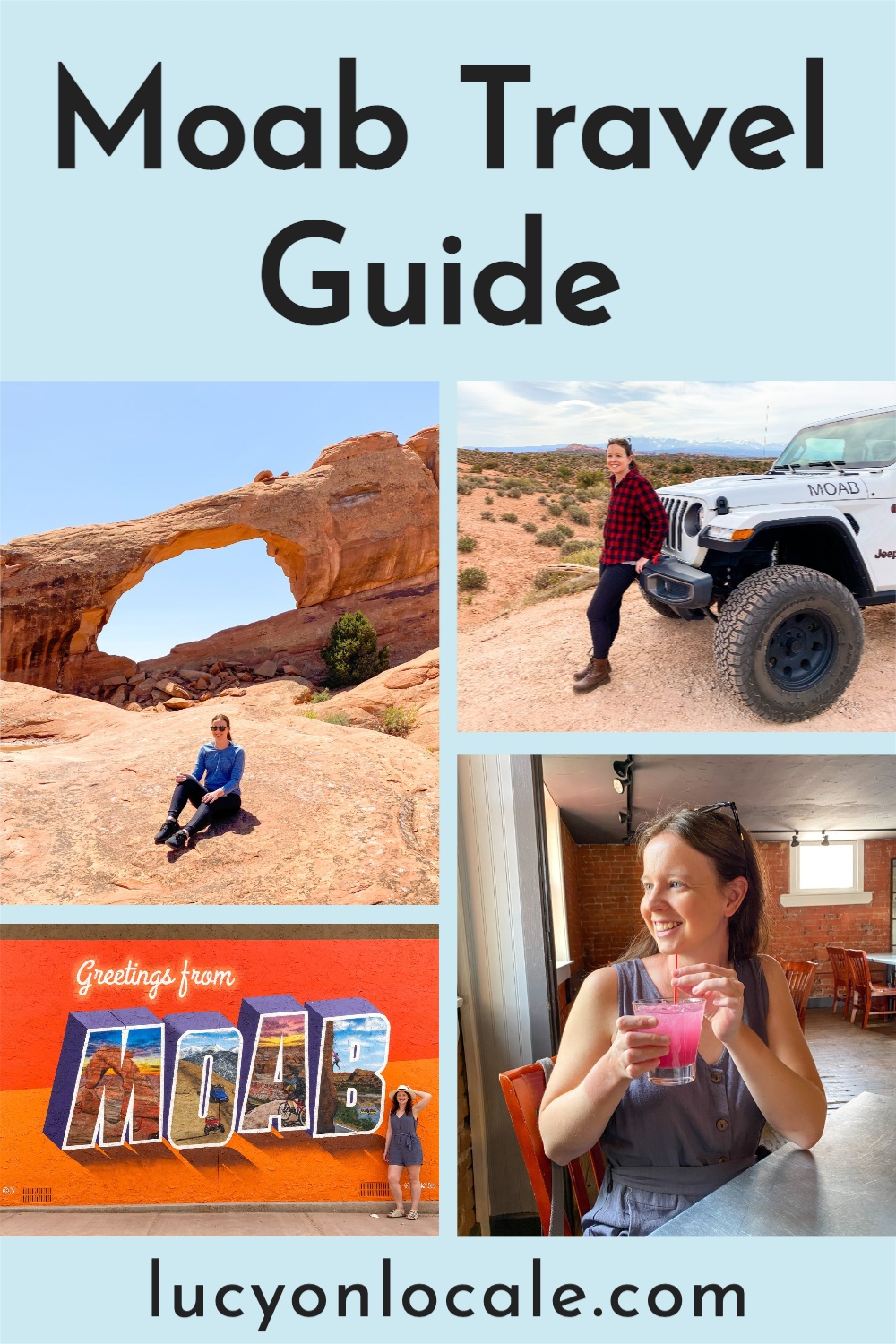
Moab is the perfect home base for exploring Arches and Canyonlands National Park on a Utah “Mighty Five” road trip. This is one of the best adventure destinations in the U.S., so I’ve created the ultimate Moab travel guide.
Tips for Visiting Popular National Parks
Know Before You Go: Moab is one of the most popular towns in the state, which means accommodations and tours book up FAST in the Spring, Summer, and Fall. So make reservations as early as possible.
Here’s the ultimate Moab travel guide!

When To Go
June to August is the peak travel season, so be prepared for limited parking, full hotels, restaurant lines, and crowds at the national parks. You can avoid some of the other visitors by going on weekdays, and book your accommodation as far in advance as possible. Daytime temperatures can get up to 110 degrees, so plan on hiking in the mornings and evenings.
The rainy season is in late summer when frequent afternoon thunderstorms can bring heavy rain, flash flooding, or lightning. So you’ll need to monitor the weather continuously and don’t start a hike if storm warnings are in effect.
September and October are cooler months, with daytime temperatures in the mid-80s and 70s and lows in the 50s and 40s at night. There will be fewer tourists than in the summer, but you should still be prepared for crowds, especially on the weekends.
Winter is the off-season when you can have the town and national parks practically to yourself. November to March has daytime temperatures in the 30s – 50s, so it will be cold, but you won’t have to compete for parking or spots at the famous viewpoints. Some tour companies and restaurants close for these low-season months.
April and May are beautiful months to visit Moab because the wildflowers will be blooming. Daytime temperatures will be in the low 80s and 70s, but Spring is only slightly less popular than the summer, so there will be crowds and lines, especially in Arches National Park.

What To Do
The best things to do in Moab are visit Arches and Canyonlands National Park!
Day 1: Arrive at Arches National park as early as possible. Start with the Delicate Arch hike (3-mile round trip, moderate, walking along rock ledges, plan on this taking at least three hours).
Next, stop at the Salt Valley and Fiery Furnace Viewpoints. Then hike out and back to Sand Dune Arch. If the Delicate Arch hike is too strenuous for you, walk to the Upper Delicate Arch Viewpoint (200 feet, easy, 15 minutes round trip), then visit the Salt Valley and Fiery Furnace Viewpoints, then hike out and back to Sand Dune Arch and Broken Arch (1.5 miles round trip, easy-moderate, about an hour).
Have a packout lunch near the Devils Garden Campground, then hike behind the Amphitheatre to see Skyline Arch. Most people view Skyline Arch from the main road, but the view is better from the amphitheater side, and you can usually have the arch to yourself.
Next, drive back down the main park road and stop at Panorama Point and Garden of Eden. Then explore Double Arch and hike the North Window/South Window/Turret Arch loop.
On your way out of the park, end your day by seeing Balanced Rock, the Petrified Dunes Viewpoint, Courthouse Towers Viewpoint, and La Sal Mountains Viewpoint.
Day 2: Spend the morning in Arches National Park hiking as much of the Devils Garden Trail as possible. I recommend getting at least as far as Navajo Arch, Partition Arch, and Landscape Arch. Pace yourself, and don’t hike further out than you can walk back.
Then in the afternoon, do a guided 4×4 tour of the backcountry. More than 1.5 million people visit Arches National Park every year, but only about 15,000 venture into the backcountry. So a 4×4 ride is a way to escape the crowds and explore a part of the park that few people ever visit.
Day 3: Explore the Island In The Sky district of Canyonlands National Park. After you enter the park and stop at the visitor center, pull off at both of the Shafer Canyon Overlooks. Then head to the Mesa Arch trailhead and do this easy, 0.6-mile round trip, 30-minute hike.
Next, continue on the park’s scenic drive towards Upheaval Dome. Drive to the end, turn around, stop at any pullouts you can, and make the short drive to the Green River Overlook.
Then drive towards Grand View Point Overlook at the other end of the park. Stop at any pull-offs on your way to the end of the scenic drive. Park at the Grand View Point Overlook trailhead, and hike this trail out and back as far as time allows.
In the afternoon, hire a 4×4 vehicle and driver for a backroads tour of Canyonlands where few visitors venture in Canyonlands.

My Favorite Guide Books

Where To Eat
My Favorites: Gloria’s Corner Cafe (Cafe, $$-$$$), Antica Forma (Italian, $$-$$$), The Broken Oar Restaurant (American, Bar, $$-$$$).
Southwestern: Quesadilla Mobilla ($), Miguel’s Baja Grill ($$-$$$), Fiesta Mexicana ($$-$$$).
Breakfast: Jailhouse Cafe ($$-$$$), Sweet Cravings Bakery + Bistro ($$), Love Muffin Cafe ($$-$$$).
Fine Dining: Desert Bistro (American, Fusion, $$$$), Sunset Grill (Steakhouse, $$$), Il Posto Rosso (Mediterranean, $$$$).
Cheap Eats: Moab Diner and Ice Cream Shoppe (Diner, $), Milt’s Stop and Eat (Quick Eats, $), Red Rock Bakery and Cafe (American, $).
For Drinks: Moab Brewery (American, Pub, $$-$$$), The Spoke on Center (American, Vegan, $$-$$$), 98 Center (Asian, Fusion, $$-$$$), Castle Creek Winery.

Where To Stay
Moab has lots of accommodation options for every budget and preference. So I’ve rounded up the best hotels, vacation homes, and glamping near Moab.
For camping, I highly recommend staying at the Devils Garden Campground inside Arches National Park. This campground requires reservations from March to October, and these sites book up FAST, so reserve yours as early as possible. Between November and February, campsites are first-come, first-served.
If you’re bringing an RV or motorhome, opt for the Sun Outdoors Arches Gateway park or the Sun Outdoors Canyonlands Gateway park.

Shop My National Park Essentials

Is there anything you’d add to this Moab travel guide? Let us know in the comments!

Plan The Rest Of Your Trip

Recommended Tours in Moab

Frequently Asked Questions
How many days do you need for Moab?
At least three days.
Day 1: Arrive at Arches National park as early as possible. Start with the Delicate Arch hike (3-mile round trip, moderate, walking along rock ledges, plan on this taking at least three hours).
Next, stop at the Salt Valley and Fiery Furnace Viewpoints. Then hike out and back to Sand Dune Arch. If the Delicate Arch hike is too strenuous for you, walk to the Upper Delicate Arch Viewpoint (200 feet, easy, 15 minutes round trip), then visit the Salt Valley and Fiery Furnace Viewpoints, then hike out and back to Sand Dune Arch and Broken Arch (1.5 miles round trip, easy-moderate, about an hour).
Have a packout lunch near the Devils Garden Campground, then hike behind the Amphitheatre to see Skyline Arch. Most people view Skyline Arch from the main road, but the view is better from the amphitheater side, and you can usually have the arch to yourself.
Next, drive back down the main park road and stop at Panorama Point and Garden of Eden. Then explore Double Arch and hike the North Window/South Window/Turret Arch loop.
On your way out of the park, end your day by seeing Balanced Rock, the Petrified Dunes Viewpoint, Courthouse Towers Viewpoint, and La Sal Mountains Viewpoint.
Spend the morning in Arches National Park hiking as much of the Devils Garden Trail as possible. I recommend getting at least as far as Navajo Arch, Partition Arch, and Landscape Arch. Pace yourself, and don’t hike further out than you can walk back.
Then in the afternoon, do a guided 4×4 tour of the backcountry. More than 1.5 million people visit Arches National Park every year, but only about 15,000 venture into the backcountry. So a 4×4 ride is a way to escape the crowds and explore a part of the park that few people ever visit.
Day 3: Explore the Island In The Sky district of Canyonlands National Park. After you enter the park and stop at the visitor center, pull off at both of the Shafer Canyon Overlooks. Then head to the Mesa Arch trailhead and do this easy, 0.6-mile round trip, 30-minute hike.
Next, continue on the park’s scenic drive towards Upheaval Dome. Drive to the end, turn around, stop at any pullouts you can, and make the short drive to the Green River Overlook.
Then drive towards Grand View Point Overlook at the other end of the park. Stop at any pull-offs on your way to the end of the scenic drive. Park at the Grand View Point Overlook trailhead, and hike this trail out and back as far as time allows.
In the afternoon, hire a 4×4 vehicle and driver for a backroads tour of Canyonlands where few visitors venture in Canyonlands.
What is the best month to visit Moab?
June to August is the peak travel season, so be prepared for limited parking, full hotels, restaurant lines, and crowds at the national parks. You can avoid some of the other visitors by going on weekdays, and book your accommodation as far in advance as possible. Daytime temperatures can get up to 110 degrees, so plan on hiking in the mornings and evenings.
The rainy season is in late summer when frequent afternoon thunderstorms can bring heavy rain, flash flooding, or lightning. So you’ll need to monitor the weather continuously and don’t start a hike if storm warnings are in effect.
September and October are cooler months, with daytime temperatures in the mid-80s and 70s and lows in the 50s and 40s at night. There will be fewer tourists than in the summer, but you should still be prepared for crowds, especially on the weekends.
Winter is the off-season when you can have the town and national parks practically to yourself. November to March has daytime temperatures in the 30s – 50s, so it will be cold, but you won’t have to compete for parking or spots at the famous viewpoints. Some tour companies and restaurants close for these low-season months.
April and May are beautiful months to visit Moab because the wildflowers will be blooming. Daytime temperatures will be in the low 80s and 70s, but Spring is only slightly less popular than the summer, so there will be crowds and lines, especially in Arches National Park.
Which is better Arches or Moab?
Moab is the best “home base” for exploring Arches and Canyonlands National Park. You absolutely need to visit all three of these places – Moab, Arches, Canyonlands – on a Utah Mighty Five road trip
How many nights should I stay in Moab?
You need at least three nights in Moab.
Day 1: Arrive at Arches National park as early as possible. Start with the Delicate Arch hike (3-mile round trip, moderate, walking along rock ledges, plan on this taking at least three hours).
Next, stop at the Salt Valley and Fiery Furnace Viewpoints. Then hike out and back to Sand Dune Arch. If the Delicate Arch hike is too strenuous for you, walk to the Upper Delicate Arch Viewpoint (200 feet, easy, 15 minutes round trip), then visit the Salt Valley and Fiery Furnace Viewpoints, then hike out and back to Sand Dune Arch and Broken Arch (1.5 miles round trip, easy-moderate, about an hour).
Have a packout lunch near the Devils Garden Campground, then hike behind the Amphitheatre to see Skyline Arch. Most people view Skyline Arch from the main road, but the view is better from the amphitheater side, and you can usually have the arch to yourself.
Next, drive back down the main park road and stop at Panorama Point and Garden of Eden. Then explore Double Arch and hike the North Window/South Window/Turret Arch loop.
On your way out of the park, end your day by seeing Balanced Rock, the Petrified Dunes Viewpoint, Courthouse Towers Viewpoint, and La Sal Mountains Viewpoint.
Spend the morning in Arches National Park hiking as much of the Devils Garden Trail as possible. I recommend getting at least as far as Navajo Arch, Partition Arch, and Landscape Arch. Pace yourself, and don’t hike further out than you can walk back.
Then in the afternoon, do a guided 4×4 tour of the backcountry. More than 1.5 million people visit Arches National Park every year, but only about 15,000 venture into the backcountry. So a 4×4 ride is a way to escape the crowds and explore a part of the park that few people ever visit.
Day 3: Explore the Island In The Sky district of Canyonlands National Park. After you enter the park and stop at the visitor center, pull off at both of the Shafer Canyon Overlooks. Then head to the Mesa Arch trailhead and do this easy, 0.6-mile round trip, 30-minute hike.
Next, continue on the park’s scenic drive towards Upheaval Dome. Drive to the end, turn around, stop at any pullouts you can, and make the short drive to the Green River Overlook.
Then drive towards Grand View Point Overlook at the other end of the park. Stop at any pull-offs on your way to the end of the scenic drive. Park at the Grand View Point Overlook trailhead, and hike this trail out and back as far as time allows.
In the afternoon, hire a 4×4 vehicle and driver for a backroads tour of Canyonlands where few visitors venture in Canyonlands.
Is downtown Moab walkable?
Yes, downtown Moab is very walkable between restaurants, souvenir shops, outdoor outfitters, hotels, and tour companies. Check out my Moab travel guide for the best restaurants, accommodation, and activities.
When should I avoid Moab?
June to August is the peak travel season, so be prepared for limited parking, full hotels, restaurant lines, and crowds at the national parks. You can avoid some of the other visitors by going on weekdays, and book your accommodation as far in advance as possible. Daytime temperatures can get up to 110 degrees, so plan on hiking in the mornings and evenings.
The rainy season is in late summer when frequent afternoon thunderstorms can bring heavy rain, flash flooding, or lightning. So you’ll need to monitor the weather continuously and don’t start a hike if storm warnings are in effect.
September and October are cooler months, with daytime temperatures in the mid-80s and 70s and lows in the 50s and 40s at night. There will be fewer tourists than in the summer, but you should still be prepared for crowds, especially on the weekends.
Winter is the off-season when you can have the town and national parks practically to yourself. November to March has daytime temperatures in the 30s – 50s, so it will be cold, but you won’t have to compete for parking or spots at the famous viewpoints. Some tour companies and restaurants close for these low-season months.
April and May are beautiful months to visit Moab because the wildflowers will be blooming. Daytime temperatures will be in the low 80s and 70s, but Spring is only slightly less popular than the summer, so there will be crowds and lines, especially in Arches National Park.
How far is Canyonlands from Moab?
Canyonlands is about 30 miles (45 minutes) from Moab. When you stay in Moab, you absolutely need to spend a day in Canyonlands National Park!
Is Capitol Reef or Canyonlands better?
Canyonlands and Capitol Reef are both incredible destinations, and they will give you very different scenery and experiences. I highly recommend visiting both of these national parks!

This Moab travel guide is not a sponsored post, and, as always, the thoughts and opinions expressed in this Moab travel guide are entirely my own. Some of the links in this Moab travel guide are affiliate links, and, at no cost to you, I may earn a small commission from this Moab travel guide.
 Travel Shop
Travel Shop Merch
Merch Travel Tips
Travel Tips
 Photography
Photography Points & Miles
Points & Miles Credit Cards
Credit Cards